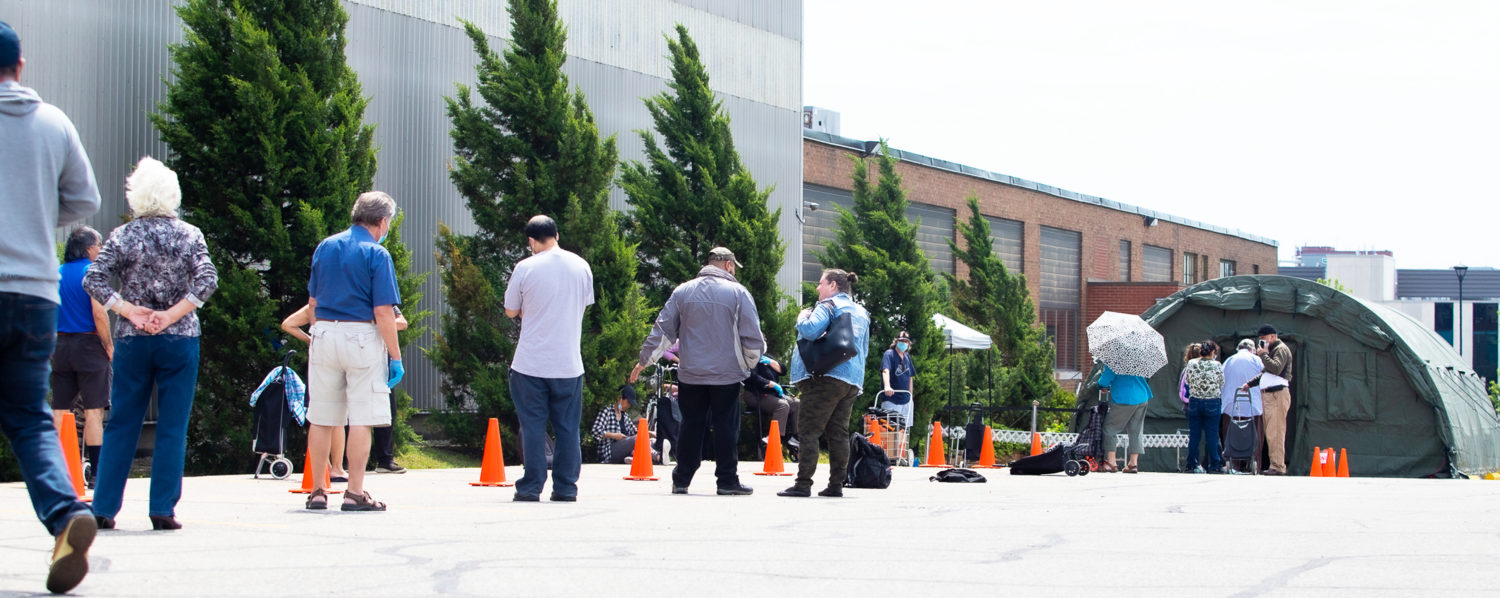
Last month marked the one-year anniversary of the COVID-19 lockdown, but also another milestone: over one million visits to food banks in Toronto since the lockdown was declared in March 2020.
These milestones should make us take pause. We have learned a great deal about infection prevention and control in the past year, and we will undoubtedly be better prepared to handle the threat of future viruses.
But will we be better prepared to handle the risk of future economic shocks and the impacts of growing income inequality?
Food bank use is a symptom of poverty. It is often a last resort after people have exhausted other options, like asking friends and family for help or delaying bills. The fact that monthly food bank visits in Toronto have been 50 per cent higher on average compared to the year prior points to the severe financial strain facing many households in our city.
The pandemic has clearly exposed holes in our social safety net. Canada’s Employment Insurance system was designed in the 1940s and no longer reflects the reality of most low-wage workers. Due to changes made to Ontario’s labour laws in 2018, employers are no longer required to provide paid sick days or pay equal wages for casual, temporary or part-time work. Social assistance rates have been frozen since 2018 and remain well below the poverty line.
Emergency responses like the Canada Emergency Response Benefit (CERB), rapid housing initiatives, and increased funding to social services have helped to patch some of these holes during the pandemic, but these are temporary solutions to long-term problems.
The health and economic impacts of COVID-19 have disproportionately impacted the same communities who were facing higher rates of poverty pre-pandemic: racialized communities, people with disabilities, newcomers and women. These are the same communities who will continue to disproportionately experience poverty unless we refocus and reinvest in poverty reduction efforts.
Ontario recently released its 2020-2025 Poverty Reduction Strategy, but its sole target is to move social assistance recipients into employment. Employment can be a pathway out of poverty, but only when combined with strong labour protections and livable wages, accessible education and training, and access to affordable housing, child care, and health benefits.
A true commitment to poverty reduction recognizes that not everyone can work and provides adequate and dignified income supports for those who cannot.
After a year of living with the realities of the pandemic, it is important to look back and reflect on what we’ve learned along the way. It is even more important to look toward the future. Where do we want to be a year from now?
By this time next year, it is likely that all Ontarians who want to be will be vaccinated against COVID-19.
But in a year from now, it is unlikely all people in Ontario will be able to afford both rent and food, unless we adopt a comprehensive approach to poverty reduction, with clear targets, accountabilities and adequate funding attached.
With government deficits growing, many will wonder whether we can afford to invest in poverty reduction in this fiscal climate. But the question we must ask ourselves is, can we afford not to? A 2019 analysis estimates that poverty costs Ontario between $27-$33 billion each year. Beyond the monetary costs of increased health and justice system expenses, poverty also leads to an incalculable toll on human life and dignity.
The pandemic has shown us what is possible. We have seen communities come together. We have seen all levels of government mobilize and collaborate. We have seen that change can happen in great leaps. Let’s use this same energy and creativity to propel us into a future without poverty.
Op-ed written by Neil Hetherington, CEO and Talia Bronstein Vice-President of Research and Advocacy at Daily Bread Food Bank.
Published in Toronto.com.